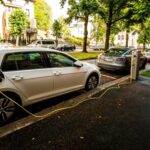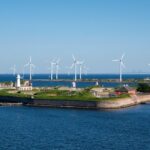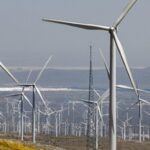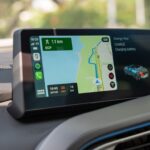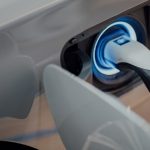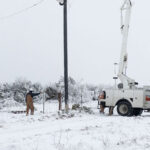Posts tagged with 'electricity grid'
Electric vehicle sales have been growing exponentially due to falling costs, improving technology and government support. Globally, 10% of passenger vehicles sold in 2022 were all-electric, according to analysis of data from the International Energy Agency. That’s 10 times more than ...

To date, over 90 countries have set net-zero emissions targets, committing to help prevent the most harmful impacts from climate change. But questions remain around the credibility of many of these pledges and whether these goals will be met. Together, countries with net-zero targets — which ...

Over the past 10 years, large energy buyers including corporations and cities have taken major strides to reduce energy-related greenhouse gas emissions by setting 100% renewable energy targets and then purchasing renewable electricity to demonstrate progress on an annual basis. ...

To cut transport emissions, moving vehicles away from burning fossil fuels is a fundamental step. However, the e-mobility transition is not only an opportunity to reduce emissions but to modernize mobility across the board, from expanding access to public transport ...

Editor’s Note: This article was updated in April 2023 with new findings from WRI’s dataset tracking electric school bus adoption in the United States, covering October to December 2022. To the best of our knowledge, these statistics are updated as of Dec. ...

More than 20 million students in the United States ride school buses every year. This equals approximately 7 billion trips per year, making school buses one of the most widely used forms of public transport in the United States. But those trips aren’t always ...

For decades, the city of Peshawar, in the Khyber Pakhtunkhwa province of northern Pakistan, has been rocked by wars and acts of terrorism that disrupted public safety and made it difficult to plan the city’s growth. A particularly challenging consequence ...

Vehicle ownership per capita has grown five‐fold in India since 2000. As a result, passenger transport activity has more than tripled, and energy demand more than doubled from 2000 to 2020. The transport sector is the third largest greenhouse gas ...

The recent enactment of the bipartisan Infrastructure Investment and Jobs Act in the United States is an important step on the path to cleaner school bus rides for the more than 20 million children who rely on an iconic yellow bus ...

In August 2021, the Biden Administration and American automakers set a goal for electric vehicles (EVs) to make up 50% of new vehicle sales by 2030. In support of this goal, the recently enacted federal Infrastructure Investment Act allocates $7.5 ...

The transport sector is the third largest source of GHG emissions in China, following the power and industry sectors. Heavy-duty truck transportation accounts for 41% of the country’s freight demand (in tonne-kilometers) and 84% and 40% of motor vehicles’ NOx ...

Reducing carbon emissions in buildings will be critical to achieving the Paris climate goals and achieving net zero emissions by 2050. Buildings represent 39% of global greenhouse gas emissions, including 28% in operational emissions and 11% in building materials and construction. Global building floorspace ...

The allure of electric vehicles (EVs) has never been stronger. EVs have zero tailpipe emissions, offer lower operating costs than conventional gasoline-powered vehicles and now come in a range of sleek models. With the tailwind of private sector initiatives such ...

In densely urbanized Hong Kong, transport is the second largest source of greenhouse gas emissions, at 18%. Vehicle traffic is also a major source of toxic air pollutants like NOx, volatile organic compounds and carbon monoxide, accounting for 18%, 21% ...

Recent events in Texas and elsewhere in the U.S. are reminding us that our existing energy system infrastructure and operating structures are increasingly being challenged by severe weather-related events. In Texas, unprecedented freezing temperatures created a “perfect storm” of disruption, including ...












